I found these to be very informative since I'am extremely confused and frustrated at why some breeders can have their fries looking almost fully grown at 3 months and why mine still look like runny-nosed whelps version of their proud parents (but they sure do look very promising...)^^
Power Growing Your Fry
By: BettySplendens
Submitted: 8/25/2006
"How do you get your fry to grow so quickly?"
Most experienced breeders are inevitably asked this question, so for this new feature of Bettysplendens.com I'd like to address how to get the fastest growth from your betta fry.
We've all been there at some point. We've read the Aquabid listings or seen bettas on the websites of some high profile breeders claiming that their fully-developed beauties are only 2 or 3 months old, and then looked with exasperation at our own 4 month old tadpoles and wondered what we were doing wrong. The advantages to growing out your bettas quickly is, of course, that you can achieve your breeding goals much faster by being able to perform another filial spawning every 3-4 months than you would by doing it every 7-8 months. Since most of us were attracted to breeding bettas, in particular, because of the almost limitless color/pattern combinations possible with them, moving on to subsequent generations as quickly as possible is in our best interests.
However, you might be among those breeders for whom raising bettas is such a relaxing pastime that you do not mind bringing them along more slowly. In that case, the following may be useful for you if you are interested in showing or selling your fish, and want to get as much growth out of them as possible in a limited amount of time.
Water
This is the one I feel is the most paramount in importance - water quality. Most new breeders do not change the water nearly as often as they should to maximize fry growth. A common reason for this is that many conscientious breeders only feel it is necessary to change the water once or twice a week, enough to maintain healthy ammonia and nitrate/nitrite levels in the growout tank. While this is commendable and goes a long way towards making sure your betta fry remain healthy, twice a week water changes are not sufficient for coaxing the best growth out of your fry.
The explanations for this are far from simple. Scientific studies have proven that most fish, including bettas, excrete a hormone that acts as an inhibitor to growth. In the betta community it has widely been said that this growth hormone stifles the potential of smaller fish in the spawn, giving the advantage to the larger, healthier fry. While this goes a long way to explaining the sometimes dramatic size differences between fry from the same spawn, it is my personal belief based on what I have read that this hormone actually works to limit the growth of the fish so that it does not outgrow its environment. In nature this would be a handy tool, ensuring that there is enough space and resources for all. In the spawn tank, it's just inconvenient. A couple of hundred young fish in a ten gallon tank will soon produce enough hormone to severely limit growth unless the water is changed, and changed often. I change the water in my growout tanks at least 50% every single day. Other successful breeders have reported changing as much as 80-100% per day, with excellent results.
Water changes should begin by about 2 weeks old. If you have started with a half-full tank for the spawn, then by two weeks old you can start adding water, a gallon at a time, every day until the tank is full. This should take 4-7 days, and after that time the fry are usually large enough to make siphoning easier. Simply remove the detritus from the bottom of the tank with a very small airline tubing siphon (I attach a long piece of tubing to a straw so that I can maneuver better) and carefully vacuum the bottom of the tank. When it is clean enough, you can remove the remaining 50% of the water from the top with a clear cup so the job will go a bit faster, and you can see if you've accidentally scooped up any fry. When half of the water has been removed, simply refill the tank with clean, aged/treated water. I wouldn't recommend more than a 50-70% water change per day. While the fish will grow faster removing ALL hormone from the water, I've found that full water changes at this tender age can stress the fry.
Once the fry have been individually jarred, you can continue to expedite growth by giving them 100% water changes every day.
Feeding
Although I always recommend feeding the best food you can to your bettas, I've found that food itself is secondary to water quality. I have raised bettas to show size in 4 months on nothing but pellets and massive water changes. Live and frozen foods aren't critical for fast growth, but they DO improve the health and overall condition of your fish, which contributes to better size - so use them when you can.
An interesting method of power growing betta fry was told by fellow IBC breeder Rob Panerio, who says he can get a young betta to show size in 8-12 weeks using this technique. He combines massive water changes with gut-stuffing the fry with large quantities of high-protein live food. The choice of food corresponds with the current size of the fish; he offers the largest food that a fry can successfully fit into its mouth. They are fed several times a day, as much as they can handle. One might consider this method extreme, since he reports several losses of fry from overfeeding. However, it obviously produces results! As mentioned, he also performs large volume water changes in his fry tanks, a powerful one-two punch that produces large, showy, full sized bettas in a fraction of the time.
I realize that massive daily water changes can take a lot of time, especially when you have more than one growout tank to change. This can be difficult to accomplish, especially as most of us also have to juggle work, families and other non fish related activities. However, if you are having trouble growing your fish, I simply ask that you try it - just once! - just to see what happens. I am confident you will be pleased with the results. In addition to encouraging better growth, frequent water changes and good food also produce better looking specimens once they reach maturity. So roll up your sleeves and go play in the water! I think you'll discover it is worth it.
- There goes my problem... I just don't have as many free time to water change as these folks... But I'am improving my efforts to water change every other day though (kung dli tapulan)...^^
Bolus feeding, that I'm doing! ^^
Results 241 to 250 of 751
-
06-24-2008, 12:29 AM #241
-
06-26-2008, 08:31 AM #242
ask ko about sa fry survival??
dba daghan man ang mo hatch! i.e 100 fries then ang mo survive sa adult or juvy stage is mga 15 lang!
what's the reason why na deads ang 85??
dli ba kaha nag ayaw ang mga male or eat each other or less ra ang live foods or gamay lang jud ang mo survive sa ing ani na type na FF?
ang grow out tank ba kinahanglan na dako mga L 36 W is 18 nya naa juy plants para sa makhide sila or wala?
salamat sa mo tubag ani
-
06-26-2008, 07:49 PM #243
daghan muhatch pero usually dali ra na mamatay kung kulang sa food.
1st week sa fry pinaka critical. Other breeders can have 70% survival rate
especially if the grow out tank daghan plants or usahay lumot, kay naa cla immediate makaon
kung di ka kapakaon. Based on my experience food ug water condition ang
importante.
-
06-26-2008, 07:52 PM #244
Nice info Roy

practice makes perfect
cge pa ta ani?? hehehe
kita ta opening edgar na shop:o
-
06-26-2008, 07:54 PM #245
Ahhh ani na cya Pulchra...
Let's say you have a spawn... Usually mga average eggs ky mga 300-600 eggs but could be as many as a thousand or as small as 50...
Bettas spawn for an average of 4 hours until the males has squeezed all the eggs from the female...
Those eggs who were laid in the first hours surely would hatch first right (which would be in 24-48 hours depending on the temperature of the sorroundings)?
For the first three days a fry would use its stored yolk until they would be free swimming in about 72 hours where in they would now start looking for food...
Those fries that have hatched first would simply have an advantage...
Then there are those fries that would simply eat anything you feed them like hard boiled egg yolk in my case, and there are those that are real finicky eaters...
Those that are eating less would simply be left behind in size... Some would die by simply starving.
Then as the fries get a little bigger studies by Betta experts have found that Betta fries secret hormones to stunt the growth of their siblings which would be helpful in the wild where they would have to compete when food is scarce.
It is then that cannibalism would take place... So some runts would be eaten by their own bigger siblings... Those that survive now have stunted growth and would remain a runt til' it is an adult... I have seen sibling Bettas that have so much size discrepancy like my friend's crowntails... Some runts are still as big as when they are juveniles yet they are already a year old...
There are so many other factors such as ammonia poisoning when the water gets too polluted or when your fry tanks gets a draft from the cold weather (fries are very sensitive to temperature in their water and the surface in their 1st week of life, you should cover your tank until they would be a week old when their labyrinth organs are now developed); then there is the space of your spawning tank, if the tank is too small it now then gets too crowded, some fries would surely die...
Simply put; it is what we call SURVIVAL of the FITTEST... Only the strongest, biggest, most gluttunous fries make it to adulthood... It is nature at work to ensure that only the healthiest Bettas breed and pass on the best genes...
-
06-26-2008, 07:59 PM #246
O cge pwde pud muhapit ko ugma after nko adto sa hospital bai... Hehehe nanawag to imu amigo nko c Cyril gnha, ako g hatagan number sa Dumoy betta Club...^^
So far bai from my spawns, the best male fry can spread his caudals to 180 degrees! I have a Halfmoon! Hehehehe ganiha lang jud nag start ug flaring ang males unya ako na g separate sa ilang sisters...
I'll post pics soon...
-
06-26-2008, 08:03 PM #247
-
06-26-2008, 08:05 PM #248
Ah ok c cyril, store manager na JB may Banawa, bag-o rana cya na adik ug fyting.
Na asyn na cya sa una sa JB Toril duol na sa Dumoy kay sikat dha ang Dumoy Ice plant
Kung sa una pa unta na cya na adik ug fyting, nagdala na unta na daghan gkan davao.
hehehe
-
06-30-2008, 12:18 PM #249
Okay new pics... Xenxa bad quality ky fone cam lang...
New batch of fries, hatched June 26... Sagol Red HM ug Black Orchid coz surrogate hatching na pud ko:
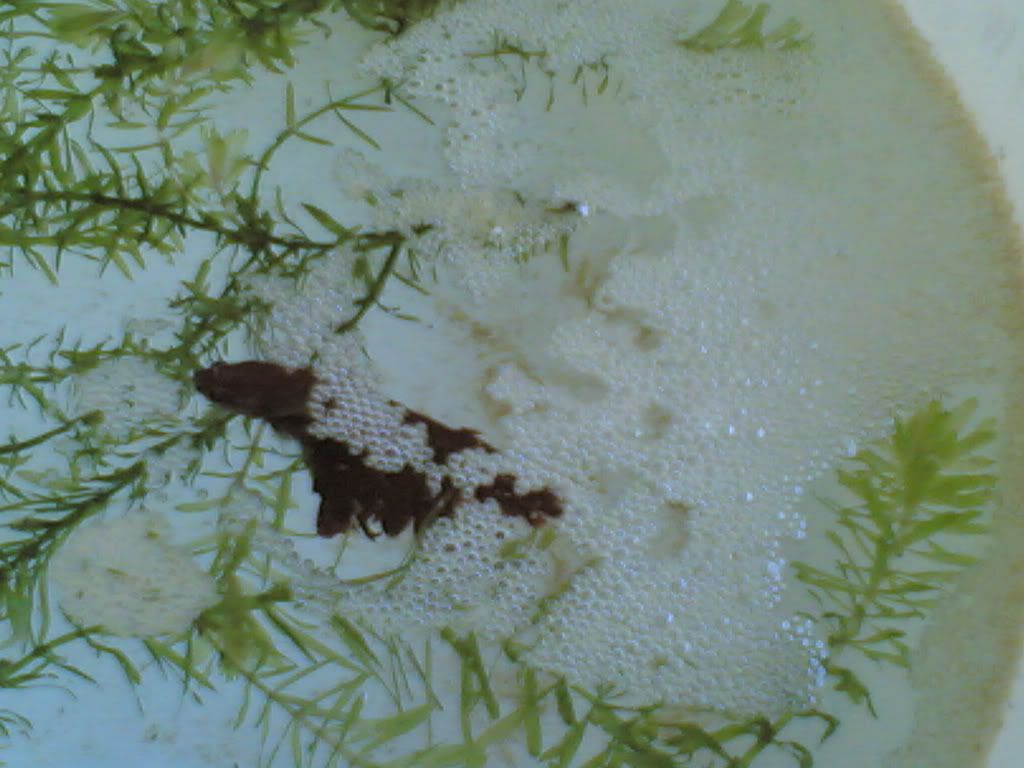
Red HM geno fries, my 4 males; Maelstrom, Chaos, Havoc and Bedlam (Nia cla Butterfly pattern or wa pa na fully red ilang whole fins so nia pa na extension sa ilang fins mga 5cm nga transparent sa edges, dli maklaro sa cam gud):
Maelstrom (I'm keeping this boy! HM, I'm not kidding! My pride and joy!) ^^
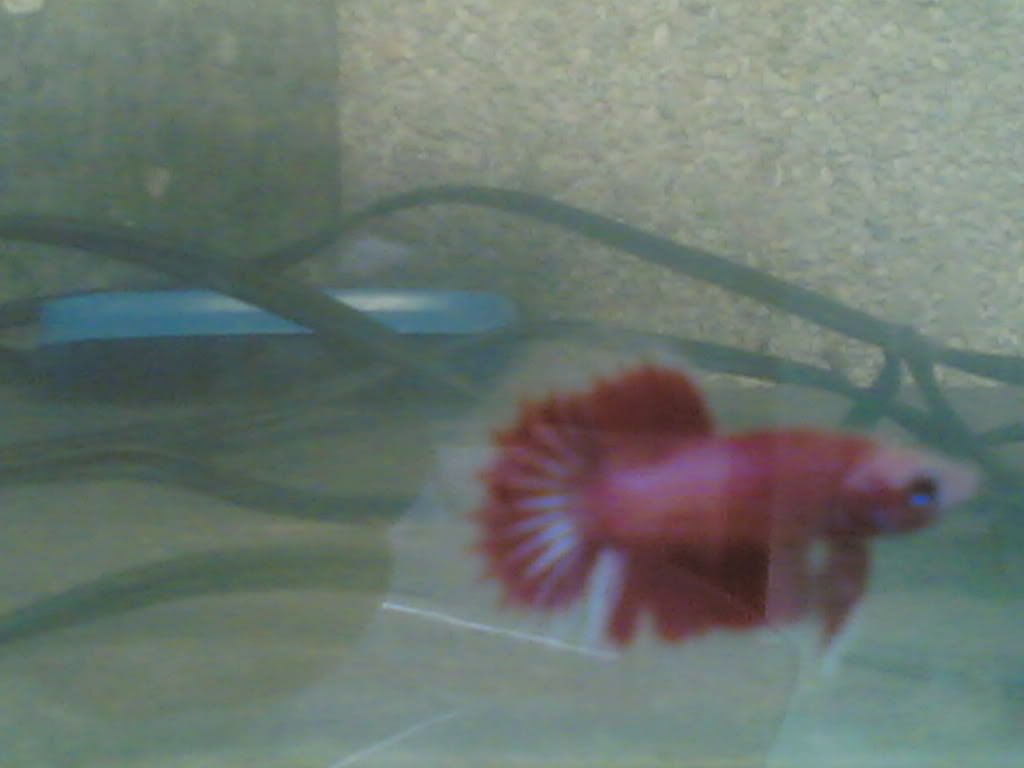
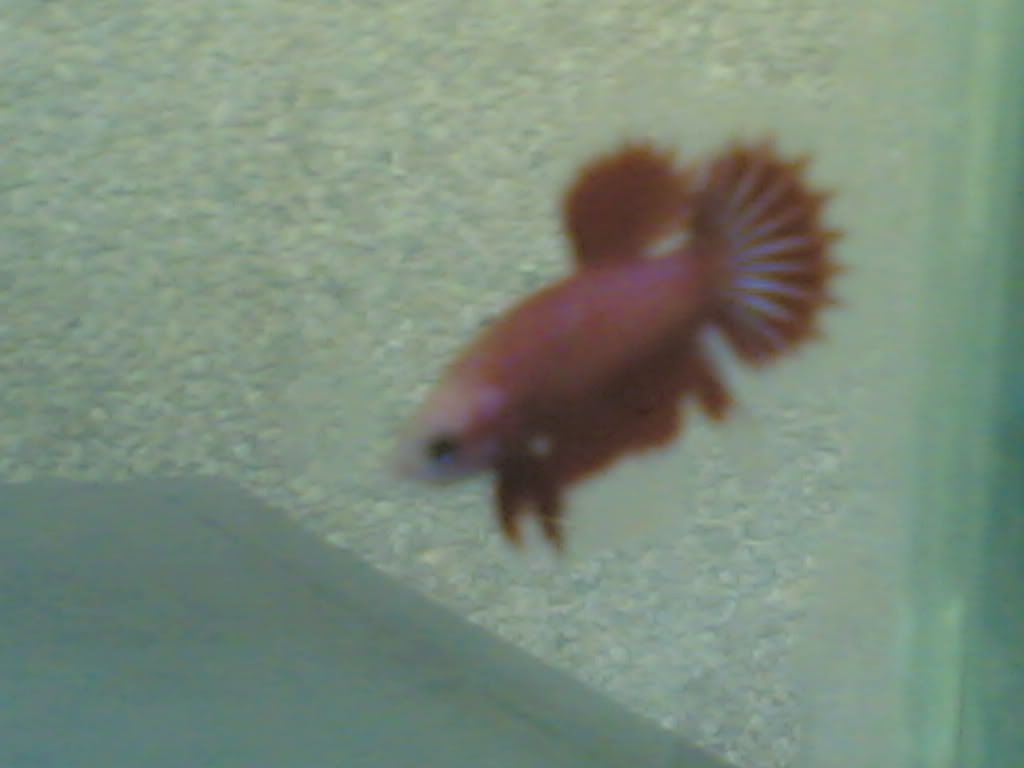
Chaos(Also HM potential, mas dako iyang Butterfly pattern)
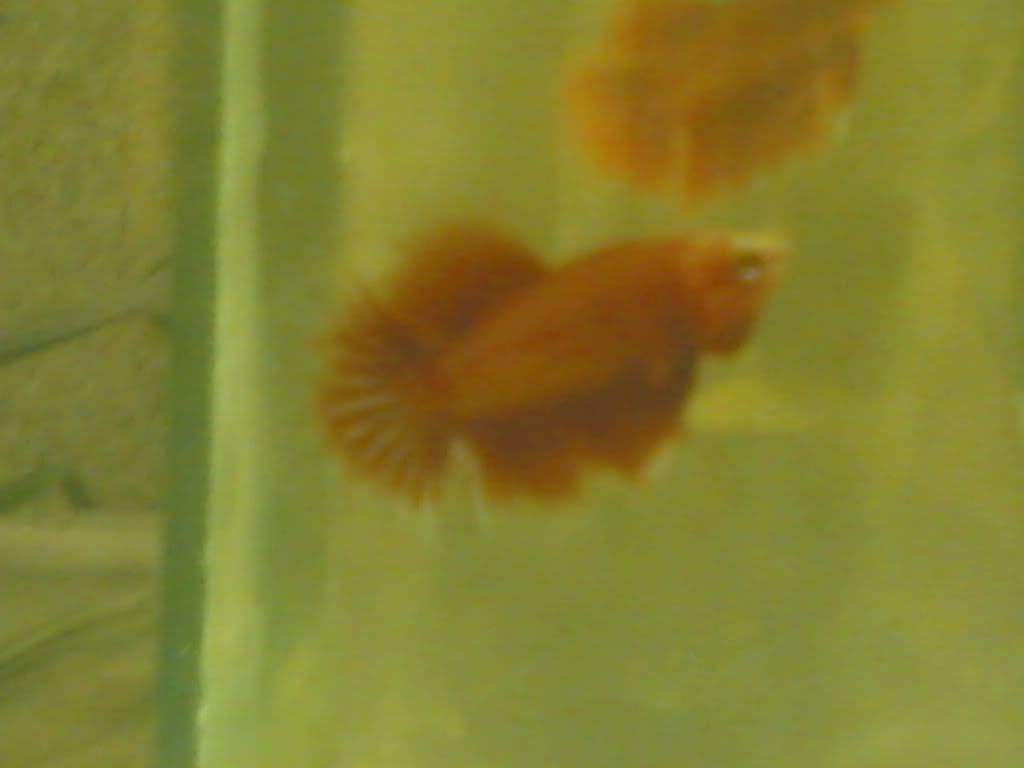
Havoc (Bright red orange, pinaka active mu flare, Super Delta)
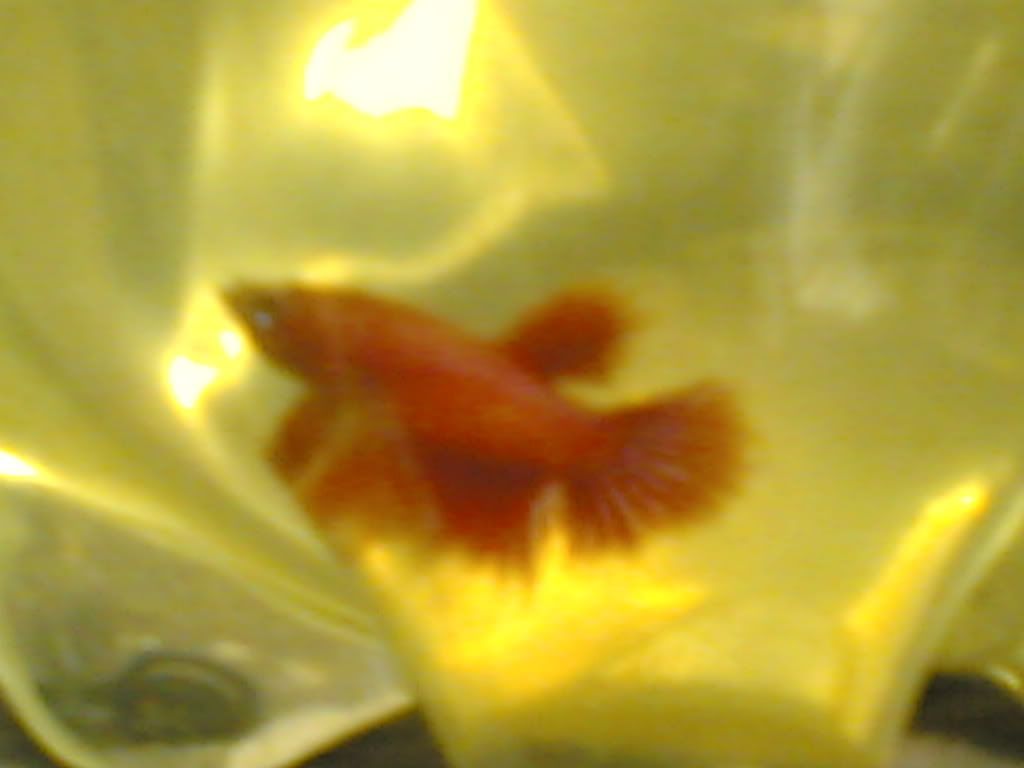
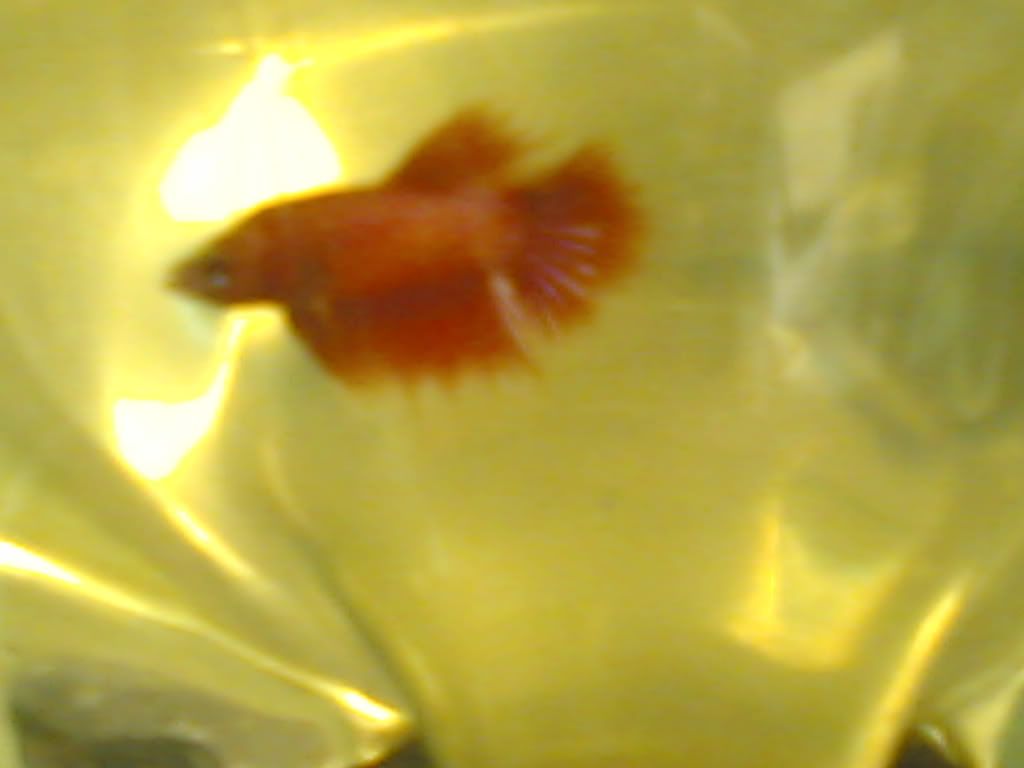
Bedlam (Super Delta)
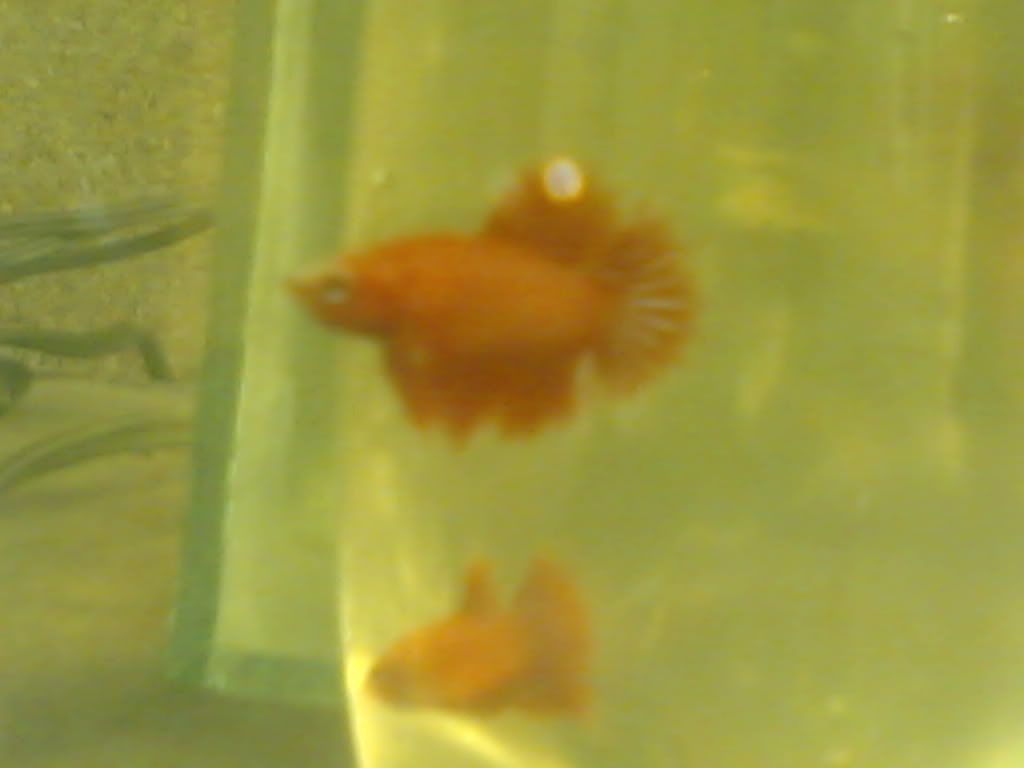
Turning 3 months this July 23, still lots of growing up to do... So I'm hoping nia pa chance ma HM ni ang 3 especially Chaos ky wide kaau iyang caudals then sharp ang edges) Wla na g flare pag picture nko ky lisod e timing...
The girls (5 of em', wa nakita ang usa), dli pa full bodied red with their mother(The big red one, lower right):
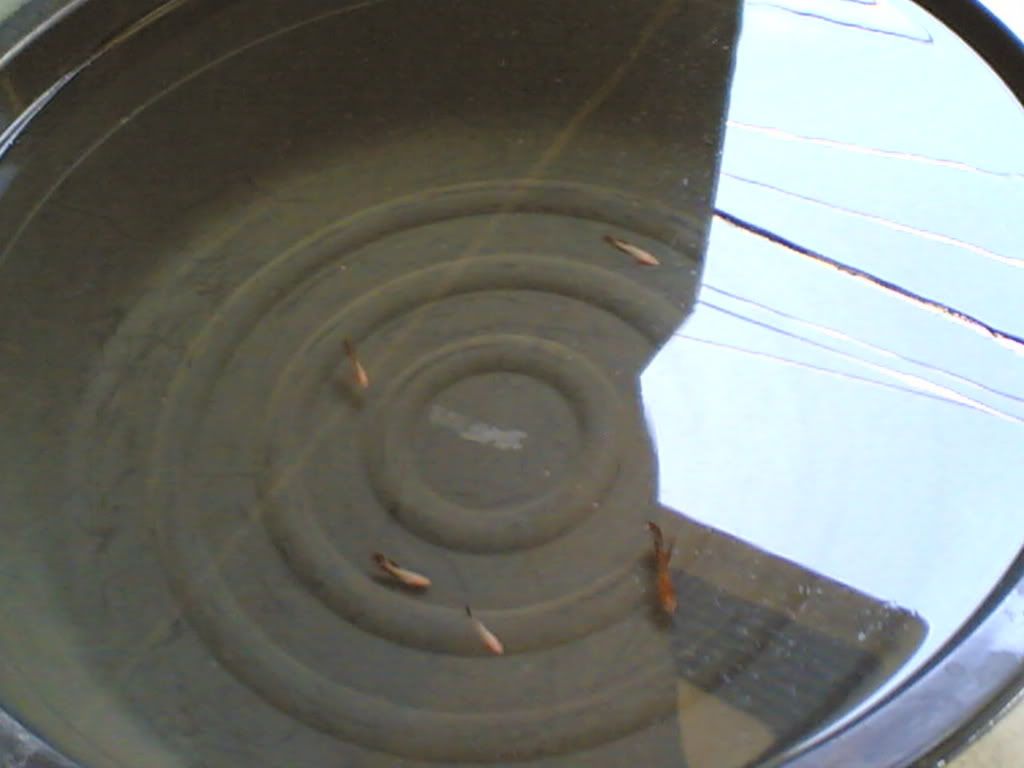
Late mu develop ang color sa female sa body unlike sa Male basta nia Cambodian strain ang extended Red gene...Last edited by The Good$!!!; 06-30-2008 at 12:24 PM.
-
06-30-2008, 12:21 PM #250
Advertisement
Similar Threads |
|





 Reply With Quote
Reply With Quote

